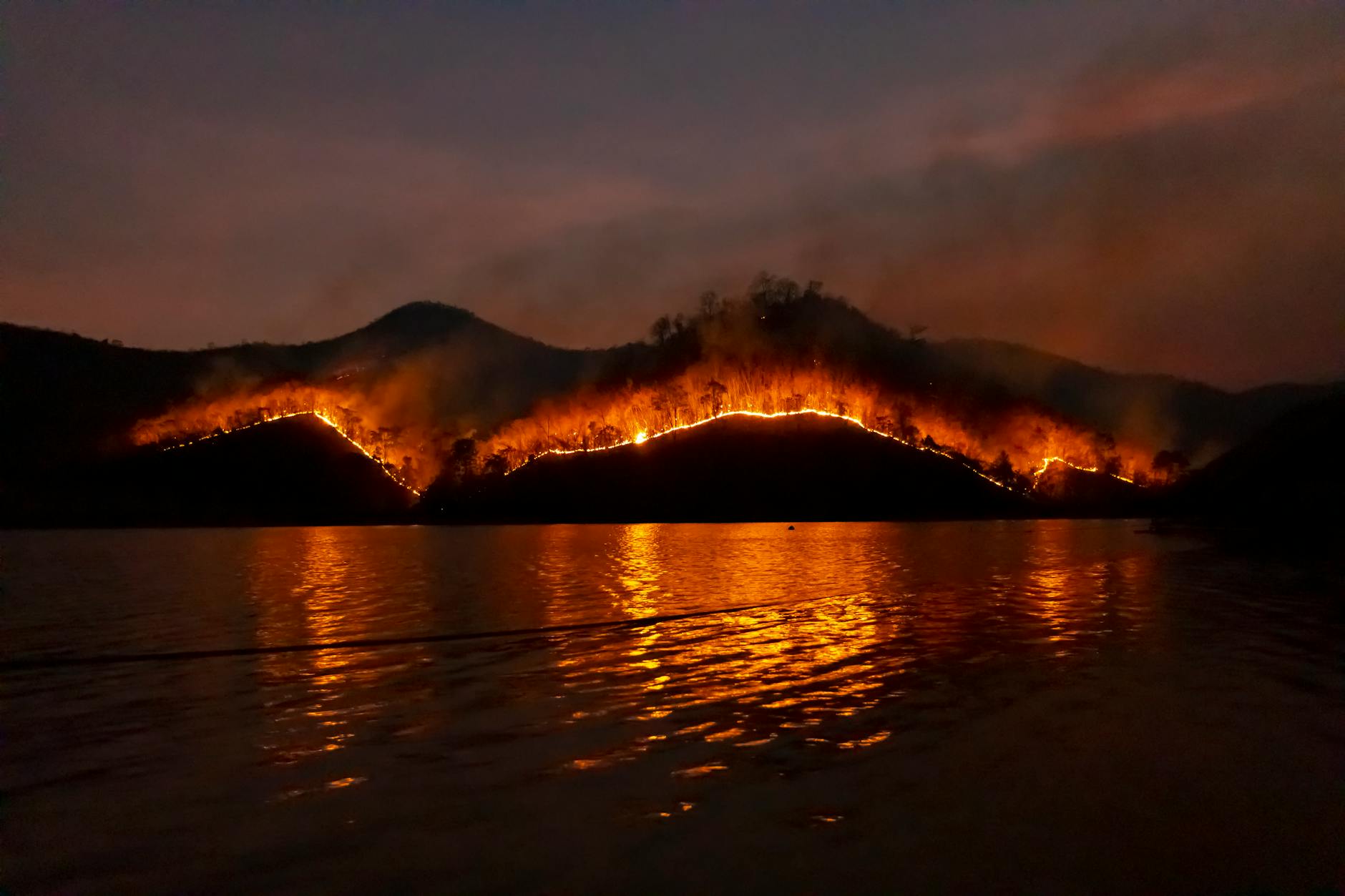How native plants help recovery.
Wildfires can leave an indelible mark on the landscape, reshaping the land and affecting both the environment and the creatures that call it home. Yet, in the aftermath of these destructive forces, hope is not lost. Native plants, with their remarkable resilience, hold the key to helping ecosystems recover and thrive once again. These plants are not just survivors—they are the architects of recovery.
The Impact of Wildfires on Ecosystems
The aftermath of a wildfire can feel like an overwhelming void. Once-flourishing forests and meadows, teeming with wildlife, are often reduced to charred remnants. Soil becomes vulnerable, erosion increases, and the delicate balance that once supported a thriving ecosystem is disrupted. Many species of plants and animals are left struggling to find their footing in an environment that has been transformed by fire.
Yet, nature has an inherent ability to heal itself, and at the heart of this recovery process are the plants that have coexisted with these landscapes for millennia. Native plants, unlike their non-native counterparts, are uniquely suited to handle the extremes of fire-prone environments. Their deep roots, fire-resistant traits, and ability to regenerate quickly make them indispensable in the healing process.
The Role of Native Plants in Ecosystem Restoration
Native plants play a pivotal role in rebuilding ecosystems because they are not only adapted to local conditions, but they also help foster the very biodiversity that is so often disrupted by fire. When a fire sweeps through an area, native plants begin the process of rejuvenating the land almost immediately. Their deep-root systems anchor the soil, preventing erosion, while their presence creates a foundation for wildlife to return.
- Soil Stabilization: The roots of native plants are often deeper and stronger than those of non-natives, helping to hold the soil together. This is especially crucial in areas where topsoil has been lost to intense heat and wind.
- Nutrient Cycling: Native plants contribute to the soil’s health by adding organic matter back into the earth. Over time, this process replenishes the nutrients that were burned away, creating a fertile environment for new life to grow.
- Habitat Restoration: Many species of birds, insects, and mammals rely on specific native plants for food and shelter. By planting these species, we provide a safe haven for wildlife to return and begin rebuilding their homes.
Native plants aren’t just survivors; they are the quiet agents of change that restore balance to the ecosystem after devastation. It is through them that we begin to see the rebirth of life, even in the wake of fire.
How Native Plants Facilitate Recovery After Wildfires
- Soil Regeneration: Deep-rooted native plants improve soil structure by preventing erosion and allowing rainwater to penetrate, thus reducing the risk of landslides. Their roots help restore the soil’s organic matter, which enhances its ability to retain moisture.
- Biodiversity Boost: By reintroducing native plants to the landscape, we create a haven for the diverse range of species that depend on them. Insects, birds, and mammals are attracted to native plants, creating a richer, more diverse ecosystem that is vital for long-term ecological stability.
- Fire Adaptation: Some native plants have evolved to not only survive fire but to thrive after it. Take, for example, the sequoia trees of California, whose cones require heat to open and release their seeds. These plants have evolved with fire in mind, making them invaluable in a post-fire recovery landscape.
Case Studies of Successful Native Plant Restoration Projects
Across the world, there are numerous success stories that demonstrate the power of native plants in wildfire recovery. In California, for instance, large-scale restoration efforts have seen native plants like California poppies and manzanita taking root, reviving charred landscapes and creating new opportunities for wildlife. Similarly, after the devastating Australian bushfires of 2019-2020, efforts to restore native species have seen the regeneration of plant species like the fire-resistant banksia, which is crucial for stabilizing the soil and offering food for local fauna.
In smaller, more local projects, native plants have been a cornerstone of recovery efforts. From community gardens in burned areas to collaborative ecological restoration programs, the use of native plants continues to demonstrate how we can help nature heal itself.
Challenges in Using Native Plants for Wildfire Recovery
While the benefits of native plants are clear, there are challenges. One major hurdle is the availability of native plants, especially after a large-scale fire. Sourcing the right plants and ensuring they are well-suited for the specific environment is crucial to success. There is also the issue of invasive species, which can take hold in burned areas, outcompeting native plants and hindering recovery efforts.
Climate change is another factor that complicates the situation, with increasingly unpredictable weather patterns affecting the ability of native plants to regenerate as they once did.
Practical Steps for Using Native Plants in Wildfire Recovery
If you’re looking to contribute to the recovery of an ecosystem after a wildfire, there are practical steps you can take. Start by identifying the native plants that are best suited to your area. Work with local conservation groups or ecological restoration professionals to ensure you’re using the right species. In areas affected by fire, focus on planting deep-rooted plants that can help stabilize the soil and reduce erosion.
Collaborate with your community to engage in local restoration efforts. Every small action—from planting a native garden to volunteering with local restoration projects—adds up and contributes to the larger goal of rebuilding ecosystems and supporting biodiversity.
The Bigger Picture: Native Plants and Climate Resilience
The role of native plants in wildfire recovery isn’t just about repairing the damage done by one fire—it’s about strengthening the resilience of our ecosystems for the future. By supporting native plant species, we’re contributing to a more sustainable and resilient landscape that can better withstand the growing threat of wildfires and other environmental challenges.
Native plants are crucial for carbon sequestration, water conservation, and creating habitats for wildlife, all of which are essential in the fight against climate change. By integrating more native plants into our landscapes, we can support ecosystems that are better able to face the challenges of an ever-changing climate.
Closing Thoughts: The Role of Native Plants in Ecosystem Recovery
As we look to the future, we must recognize the immense power of native plants in restoring ecosystems after wildfires. These plants are more than just survivors—they are the architects of recovery, creating a foundation for biodiversity, stabilizing the soil, and offering hope in the aftermath of devastation. We all have a part to play in this process, whether through planting native species in our own gardens, supporting local restoration projects, or advocating for the preservation of these invaluable plants.
By working together, we can help our ecosystems heal, regrow, and thrive once more.

